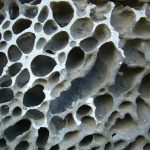 mana n: [of Melanesian & Polynesian origin]: nature’s balanced and positive energy, motivating force or power; in humans, derived from manifest accomplishment or acquired through education, then exhibited with respect and humility in rapport with others and with nature.
mana n: [of Melanesian & Polynesian origin]: nature’s balanced and positive energy, motivating force or power; in humans, derived from manifest accomplishment or acquired through education, then exhibited with respect and humility in rapport with others and with nature.
Mana Gallery Name
The gallery’s name, as the definition above illustrates, honors one of two underlying principles of East Polynesian belief (the other is tapu). It is also, not coincidentally, the name of the vessel sailed by William Scoresby Routledge and Katherine Pease Routledge on their research voyage to Rapa Nui in 1914-15. The story of the Mana Expedition to Easter Island is chronicled by Jo Anne Van Tilburg in her biography of Katherine Routledge (Among Stone Giants Scribner’s 2003).
Mana Gallery Location and History
The Mana Gallery is located at Petero Atamu s/n, in the arts district of Hanga Roa on the island of Rapa Nui (Easter Island), Chile. It is open during seasonally scheduled hours daily and by appointment.
A spacious garden may be entered on foot or by vehicle along a private road from our gate, which links with a paved street called Petero Atamu. An easy landmark is the impressive, restored ancient ceremonial site of Tahai and, fronting the western shore, the island’s lovely local cemetery. Ample parking is available for all types of vehicles. The gallery is free to the public.
The Mana Gallery is an environmentally sustainable structure designed in 2002 in collaboration between architect Johannes Van Tilburg and gallery co-owners Jo Anne Van Tilburg and artist Cristián Arévalo Pakarati. Construction of the building took place over several years and was accomplished by Cristián Arévalo Pakarati. Natural materials available on the island were used whenever possible. These include, for example, beach pebbles gathered near the shore to adorn the concrete floors as well as locally available stone, wood and sand used as structural materials or accents. Double paned windows and ceiling fans assure good ventilation. If needed, a covered terrace offers shelter to visitors who arrive on foot.
The building is sited on the Rapa Nui ancestral land associated with the entwined Pakarati and Tepano families. Both families have long traditions of cultural preservation through collaboration with scientists and artists from many nations and in all fields. Some of the more famous members of the extended family are Nicholas Pakarati Ure Potahi, the island’s first Catechist, Juan Tepano and his daughter, Amelía Tepano, as well as Santiago Pakarati. An upcoming exhibition will showcase the lives and contributions of these colorful individuals. The Mana Gallery is anchored on a west-facing, boat-shaped platform that echoes the widespread, traditional forms of Oceanic structures, and is stylistically linked to Rapa Nui secular and sacred architecture.